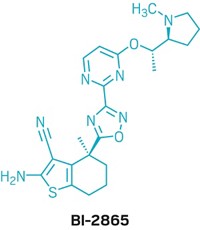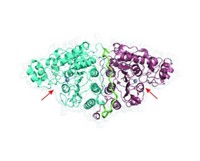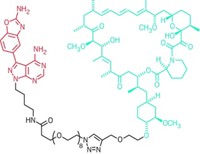Advertisement
Grab your lab coat. Let's get started
Welcome!
Welcome!
Create an account below to get 6 C&EN articles per month, receive newsletters and more - all free.
It seems this is your first time logging in online. Please enter the following information to continue.
As an ACS member you automatically get access to this site. All we need is few more details to create your reading experience.
Not you? Sign in with a different account.
Not you? Sign in with a different account.
ERROR 1
ERROR 1
ERROR 2
ERROR 2
ERROR 2
ERROR 2
ERROR 2
Password and Confirm password must match.
If you have an ACS member number, please enter it here so we can link this account to your membership. (optional)
ERROR 2
ACS values your privacy. By submitting your information, you are gaining access to C&EN and subscribing to our weekly newsletter. We use the information you provide to make your reading experience better, and we will never sell your data to third party members.
Pharmaceuticals
Good Inhibitors Come In Twos
Researchers develop another direct inhibitor of the ‘undruggable’ cancer-associated protein K-Ras
by Stu Borman
December 9, 2013
| A version of this story appeared in
Volume 91, Issue 49
Inhibitors of the cancer-associated protein K-Ras have been scarcer than hen’s teeth. But now two groups have popped up with them virtually simultaneously. Scientists had considered mutant Ras proteins to be “undruggable” because years-long efforts had yielded no direct inhibitors. Last month, C&EN reported that Kevan M. Shokat of the University of California, San Francisco, and coworkers developed a family of inhibitors with high cancer-killing potency that link covalently to a mutant amino acid in a key mutated K-Ras protein (C&EN, Nov. 25, page 7). C&EN missed a paper that came out the same week by Nathanael S. Gray of Harvard Medical School and coworkers, which described another covalent inhibitor of the same mutated protein (Angew. Chem. Int. Ed. 2013, DOI: 10.1002/anie.201307387). The Gray inhibitor, called SML-8-73-1, accesses the mutated Ras’s active site more directly than do the UCSF inhibitors, but it must be administered as a precursor that cells metabolize to the active form. Gray collaborator Kenneth D. Westover of the University of Texas Southwestern Medical Center says the team’s proof-of-concept study shows that K-Ras’s active site is indeed druggable, “despite the widely held belief, decades old now, that it is not.”





Join the conversation
Contact the reporter
Submit a Letter to the Editor for publication
Engage with us on Twitter